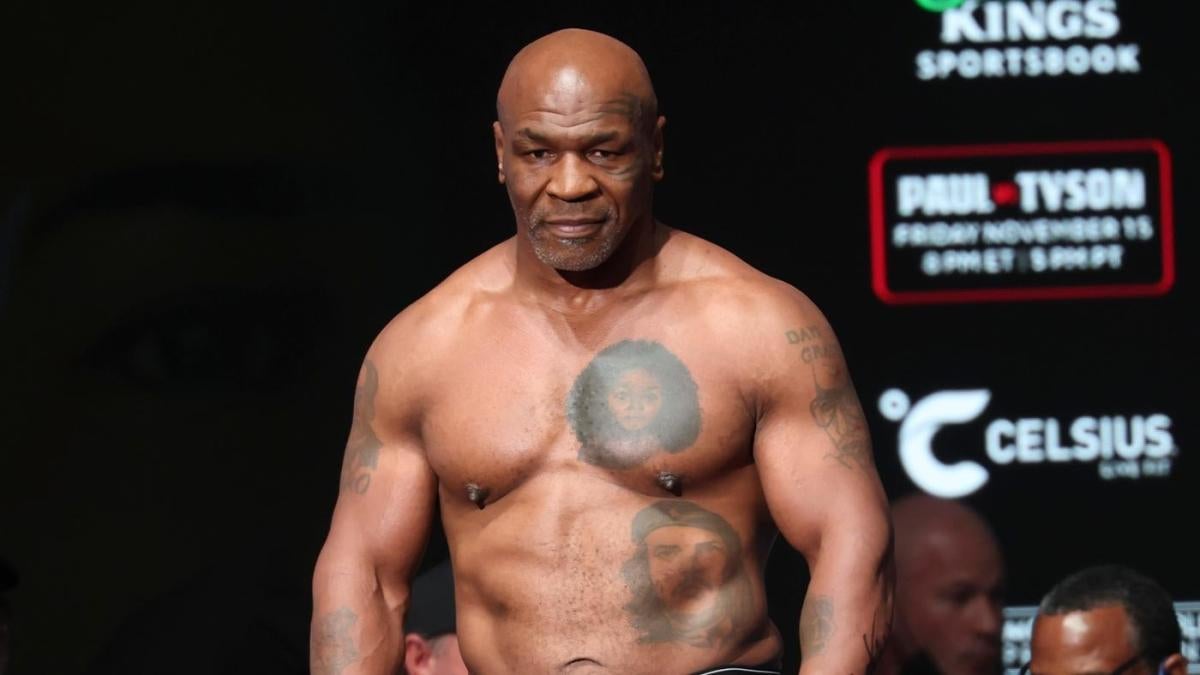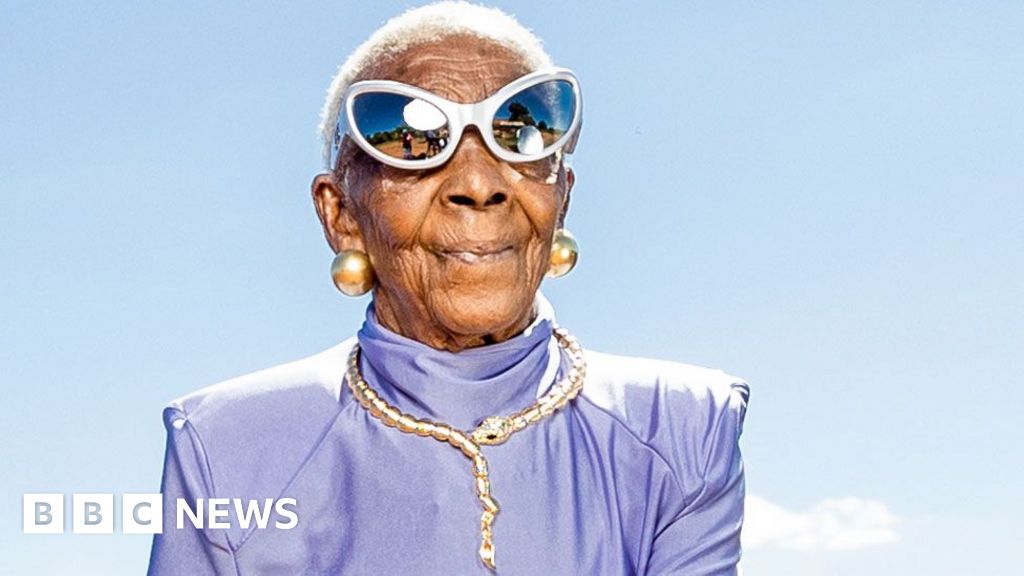Fashion
Indie Fashion Labels Redefining Brand Power And Setting New Trends

PARIS, FRANCE – SEPTEMBER 25: Designers Amaki Sacika and Kiwa Anraku close the runway during the … [+]
While the spotlight at Paris Fashion Week was on the iconic runway shows featuring Gigi Hadid and Naomi Campbell, what truly captivated me were the emerging fashion designers quietly disrupting the fashion industry. I believe these under-the-radar talents are the real drivers of innovation today.
For those familiar with my book The Kim Kardashian Principle, you’ll know that I’m convinced that brands need to dare to challenge conventions. So, if you’re searching for branding inspiration, I’d say don’t just look at the Chanels or Dries Van Notens of the world—turn your attention to fearless, up-and-coming designers who are redefining what it means to succeed.
This season in the fashion capital of Paris, at the designer’s spring-summer 2025 collections, five emerging brands—Sabokbar, Sukaz, Jasive Fernández, Tornado and Shiryu Takahashi—truly stood out. They weren’t just showing beautiful pieces; they were helping redefine branding in ways that could teach the biggest names in the biz a thing or two.
PARIS, FRANCE – SEPTEMBER 25: A model walks the runway during the Sabokbar Womenswear Spring-Summer … [+]
Sabokbar: The Power of Philosophy-Driven Branding
The brainchild of Persian fashion designer Hanieh Sabokbar, Sabokbar isn’t just designing garments; they’re crafting wearable art—or as they so poetically describe it, “places to reside in.” Their philosophy transcends fashion, focusing on existential themes and the power of shapes to create timeless, thought-provoking pieces that go beyond seasonal trends. This is what makes Sabokbar different—it’s not just about the clothes, it’s about offering something bigger, something transcendent.
Branding Lesson: Philosophy as Brand DNA
Sabokbar’s approach feels more like a spiritual experience than a typical fashion label. It’s similar to Swedish luxury brand Rave Review by Josephine Bergqvist and Livia Schück, which emphasizes environmental consciousness with its use of recycled materials. Sabokbar, however, adds a mystical, meditative twist, turning shapes into something sacred. This is what will set Sabokbar apart in a crowded luxury e-commerce market.
The lesson? Brands need to stand for something much bigger. I’ve said this before and I‘ll say it again, big brand ideas are emotionally loaded. In a marketplace filled with fleeting trends, key pieces that tell a deeper story—whether philosophical or spiritual—are what will capture the audience’s attention and loyalty.
PARIS, FRANCE – SEPTEMBER 25: A model walks the runway during the SuKaz Jackets Womenswear … [+]
Sukaz: Global Collaboration Meets Artisan Craftsmanship
Created by designer Susan Hollingsworth, Sukaz is the product of 20 years living in international locales. Sukaz showed how global collaboration can define a brand’s identity, blending cultural perspectives in ways that feel both cohesive and bold. The brand seems especially relevant due to its purpose-driven nature. And, in a fashion world often led by individual visionaries, Sukaz disrupts that narrative by pulling together a collective of designers, artists, and craftsmen from around the world. This fusion brings a fresh perspective to Paris Fashion Week, a stage usually dominated by French designers.
Branding Lesson: Diversity and Craftsmanship as Core Pillars
The brand’s commitment to organic materials and artisanal craftsmanship showcases its authenticity, a key selling point in today’s fashion retail market. Like Chinese designer Shuting Qiu, who draws from heritage and tradition, Sukaz’s collections honor tradition while pushing boundaries. With sustainability-focused audiences increasingly seeking alternatives to fast fashion, Sukaz’s blend of global artistry and craftsmanship resonates perfectly with today’s discerning consumers.
The takeaway? Diversity and craftsmanship can elevate a brand, offering authenticity that connects with audiences on a deeper level. In today’s fashion landscape, it’s not enough to just make clothes—you need to create pieces of art that tell a story.
PARIS, FRANCE – SEPTEMBER 26: Models walk the finale of the runway during the Jasive Womenswear … [+]
Jasive Fernández: Elevating Cultural Pride and Timeless Elegance
Mexican designer, Jasive Fernández presented her Grandeza Collection that blends Mexican heritage with a global perspective, bringing a sense of regality and empowerment to her designs. To me, her collection walked that fine line between modernity and tradition, while celebrating her cultural roots. What stood out was how grounded the collection was in Mexican pride, a message that resonates strongly with younger generations who I believe will continue to define and reclaim their identities in fresh ways.
Similarly, Japanese brand, Tornado is a brand deeply rooted in the significance of DNA and heritage. Driven by a fascination with the traditional Japanese kimono, the brand explores the creative possibilities of upcycling kimonos into modern Western-style clothing. Tornado’s designs honor the cultural legacy of the kimono while reimagining it for contemporary fashion. As the leader of the “Momohanabetsu Project,” Tornado promotes kimono culture and has overseen costume production for all 10 performances to date, reinforcing its commitment to preserving tradition while pushing creative boundaries.
Branding Lesson: Cultural Pride and Timeless Luxury
Fernández proves that cultural storytelling isn’t just a trend; it’s integral to brand identity. By weaving elements of Mexican royalty and femininity into her designs, she creates a narrative that’s both timeless and highly relevant. Much like Marie Adam-Leenaerdt during her sophomore catwalk in Milan, Fernández celebrates her roots while also carving her own space in the global fashion scene.
The Tornado brand embodies the duality of reclaiming heritage while reimagining it for the future. Its dedication to kimono culture is central to its brand identity, ensuring authenticity and credibility. The upcycling element of the brand also speaks to sustainability, a message that resonates strongly with today’s audience. By blending traditional craftsmanship with modern design, Tornado stays true to its roots while addressing contemporary fashion and environmental concerns.
Bottom line? Brands need to be rooted in something authentic—whether cultural pride or personal history. This kind of authenticity is what gives a brand staying power in a crowded market.
PARIS, FRANCE – SEPTEMBER 25: Designer Shiryu Takahashi closes the runway during the Shiryu … [+]
Shiryu Takahashi: Embracing the Unconventional
Japanese designer, Shiryu Takahashi has clearly taken a page out of The Kim Kardashian Principle. The brand intention wants to be the epitome of disruption. His designs don’t just challenge norms—they aim to shatter them completely. Every piece offers a bold, philosophical statement that pushes the boundaries of fashion and art. I’d say in an industry so dominated by trends, Shiryu’s design process is a refreshing reminder that brands must be brave enough to break away from the pack.
Branding Lesson: Unconventionality as a Core Philosophy
What sets Shiryu apart is that his overt commitment to unconventionality isn’t just a choice—it’s a guiding principle. Like Belgian designer Marie Adam-Leenaerdt, a 2024 LVMH Prize finalist known for her sophisticated deconstruction and reconstruction techniques, Shiryu is disrupting conventions in a way that feels both fearless and artistic. Adam-Leenaerdt’s use of exaggerated proportions and enveloping drapes is another example of how breaking the rules leads to true innovation.
For Shiryu, this means designs that blur the lines between fashion and art. His ability to stay true to his vision, even in a saturated market, speaks volumes about the power of daring to be different. The takeaway? Brands need to embrace boldness and be willing to challenge the status quo.
The Bigger Picture
The real pulse of the fashion industry? It’s never just been about the big names—it’s the independent fashion labels breaking all the rules. I’d say the next wave of fashion talent isn’t just keeping up—they’re the ones setting the pace. From London Fashion Week to Milan Fashion Week, these emerging designers are throwing sustainability, craftsmanship, spirituality, and bold storytelling into the mix and creating something entirely new. If you’re a brand leader looking to make waves, take note—because these designers from a range of international markets are already leading the charge.
Named Esquire’s Influencer Of The Year, Jeetendr Sehdev is a media personality, international speaker and the author of the New York Times bestselling sensation, The Kim Kardashian Principle: Why Shameless Sells (and How to Do It Right.)









